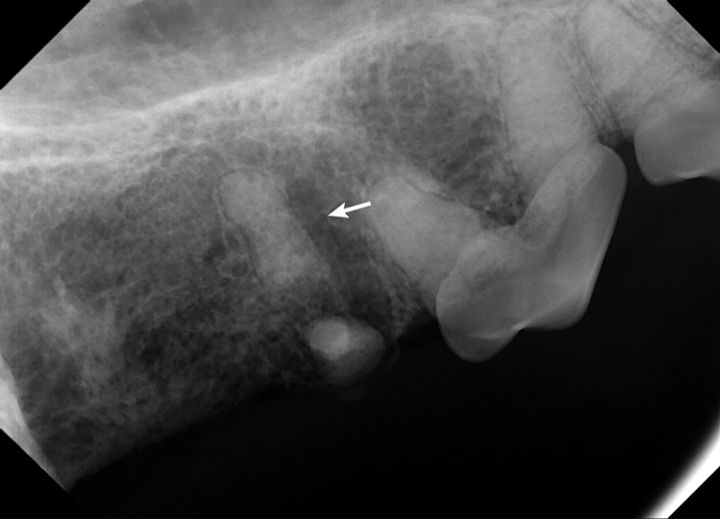Introduction
Dental issues are common in dogs, and two options for treating severe tooth issues are root canals and extractions. A root canal is a procedure to save a tooth that has become infected or decayed. The pulp (nerves and blood vessels) are removed from the tooth, the root canal is cleaned and disinfected, and it is filled with a filling material. An extraction is the complete removal of the tooth. Both procedures require anesthesia and are done by a veterinarian. Root canals aim to save the tooth, while extractions remove it completely.
Cost Comparison
When comparing the costs of a root canal versus an extraction for a dog, there are a few key factors to consider:
The cost of a root canal is generally higher upfront. A root canal typically ranges from $800 to $2,000 depending on the location and condition of the tooth. This includes the initial exam, X-rays, anesthesia, the root canal procedure itself, and any follow-up visits.
Extractions are typically less expensive, with fees ranging from $500 to $800. This covers examination, X-rays, anesthesia, and aftercare. However, it does not factor in the cost of potential tooth replacement or orthodontics after the extraction.

Over the long run, a root canal may be more cost effective since it salvages the original tooth. An extraction requires replacement of the missing tooth to prevent shifting teeth and bite issues. This can add $1,000 to $4,000 for dental implants or bridges.
Pet insurance can offset costs for both procedures. Policies may cover up to 90% of fees after any applicable deductible. For pets without insurance, vets often offer CareCredit financing.
When evaluating the costs, owners should look at the total long-term expenses for the best outcome. Saving the natural tooth through a root canal is generally more affordable in the long run.
Procedure
The procedure for a root canal and tooth extraction in dogs is relatively straightforward, though each has its intricacies.
For a root canal, the veterinarian will first administer a general anesthetic to fully sedate the dog. Then, using a dental drill, they will create an opening through the crown of the tooth and into the pulp chamber inside. The pulp chamber contains the soft tissue known as dental pulp as well as the tooth’s nerve, artery, and vein. Using specialized instruments, the vet will remove all of the dental pulp and thoroughly clean and shape the inside of the tooth. Once the inside is properly disinfected and shaped, the vet will fill and seal the tooth with an inert material like gutta-percha. Finally, they will place a crown over the tooth to protect and strengthen it.
For an extraction, the vet will also sedate the dog with general anesthesia. They will numb the area around the problematic tooth with a local anesthetic as well. Using an elevator, they will loosen the tooth and gently rock it back and forth to detach the ligaments holding it in place. Then using dental forceps, they will grasp the tooth and slowly extract it with a twisting motion. If any roots break during extraction, the vet will carefully remove remaining root fragments. They will then curette the socket to remove debris and irrigate it. Finally, they will suture the gums closed over the extraction site, allowing it to heal over time.
Recovery Time
The recovery time is one of the major factors pet owners consider when deciding between a root canal and tooth extraction for their dog. Generally, the recovery period is shorter for extractions than root canals.
With an extraction, the recovery time is usually only around 7-10 days. Your dog will likely be quite sore and uncomfortable for the first 2-3 days after the procedure. They may have some swelling or difficulty eating. But by day 4 or 5, most dogs are feeling much better and getting back to normal routine. Full healing typically occurs within 1-2 weeks.

For a root canal, the initial recovery time is similar, about 5-7 days. Your dog will be in pain and discomfort those first few days. However, total healing takes longer, around 4-8 weeks. That’s because the gum tissue around the tooth needs time to fully heal after being opened up and stitched closed. Your vet may recommend soft foods for a few weeks after the root canal as well. So while your dog will start feeling better within about a week, the healing process continues for a month or longer.
In summary, extractions generally have a shorter overall recovery time of 1-2 weeks. Root canals, while not too painful after the first week, take 4-8 weeks for full healing.
Success Rates and Prognosis
Both root canals and tooth extractions have relatively high success rates for dogs when performed correctly. However, there are some key differences in prognosis to consider.
Root canals can successfully save a tooth in 65-70% of cases. With proper home care after the procedure, the tooth could potentially last for the rest of the dog’s life. However, there is a chance of failure and need for extraction later on. Some signs of root canal failure include infection, pain, or swelling returning.
Tooth extractions have a success rate of over 90%. Once the tooth is removed, the pain and infection go away permanently in almost all cases. However, extractions can cause bone loss and have some impact on chewing. With proper recovery, dogs generally adapt well to life after extractions.
Overall, extractions have a better long-term prognosis if considering likelihood of re-treatment down the road. But root canals can be a viable option for trying to save the tooth first, especially in younger dogs.
Complications
Both root canals and tooth extractions in dogs carry some risk of complications. Here are some potential issues to be aware of with each procedure:
Root Canal Complications
A root canal is a complex procedure and some problems can arise, including:
- Damage to surrounding bone or other teeth during access – This may require additional treatment
- Fracture of the tooth during treatment – Usually requires extraction
- Failure to fully remove infected pulp – May lead to re-infection and need for re-treatment or extraction
- Nerve damage from over-filling root canal – Can cause chronic pain
Tooth Extraction Complications

Extracting a tooth also carries some risks, such as:
- Damage to the jaw bone – More likely with molars or pre-existing bone disease
- Tooth roots breaking during extraction – May require surgical extraction
- Sinus tear if extracting upper molars – Requires surgical repair
- Nerve damage – Can cause numbness in cheek or lip
Proper technique and an experienced veterinary dentist can help minimize risks with either procedure.
Long-term effects
There are some key differences in the long-term effects of choosing a root canal vs an extraction for a dog. With a root canal, the tooth can be saved, preserving structure and function. However, root canals have a failure rate over time. The tooth may eventually need to be extracted if infection returns. With extraction, the tooth is removed entirely, leaving an empty space in the mouth. This can lead to shifting teeth, dental problems, and potentially jawbone loss over time without adequate management.
For root canals, success rates beyond 2-3 years drop to around 50-70%. The main cause of failure is recurrent infection due to bacteria that couldn’t be fully removed from tiny canals in the tooth roots. These infections flare up over time, causing pain and necessitating extraction. Without x-rays and follow-up, such failures may go unnoticed by owners.
With extractions, the major long-term concern is loss of bone support around the extraction site. The jawbone depends on the stimulation of chewing to maintain its mass and strength. Without a tooth in place, the bone can atrophy over time. This may lead to additional dental problems, infections, and deterioration in older dogs. Proper long-term care with antiseptics, bone grafts or scaffolds can help maintain bone health after extractions.
Overall, both procedures come with long-term risks. For root canals, infection recurrence leading to extraction is common. For extractions, bone loss over time is the major issue. With good dental care and follow-up, dogs can do well long-term with either procedure. But their dental health and comfort should be monitored closely by owners regardless of the choice.
Lifestyle Factors

When deciding between a root canal or tooth extraction for a dog, it’s important to consider the dog’s lifestyle and how each procedure may affect their quality of life.
Active dogs that enjoy lots of running, playing, and chewing toys are often better candidates for a root canal. The preservation of the tooth allows the dog to continue normal chewing and puts less stress on the remaining teeth. An extraction site takes longer to fully heal and may temporarily impact their ability to grab toys and chew hard foods.
For dogs with more sedentary lifestyles, the extraction may heal faster and with fewer complications. The open tooth socket left after an extraction takes 4-8 weeks to completely fill in with bone. More active dogs may bump or irritate the healing site, slowing the process. Less active dogs are less likely to disturb the area during daily activities.
Dogs that exhibit aggressive chewing habits or that are prone to fracturing teeth may be better suited to an extraction. The absent tooth no longer risks further damage, infection, or complications. However, missing teeth can allow opposite teeth to over-erupt and misalign the bite over time.
Ultimately, the dog’s lifestyle, activity level, chewing habits, and dental health history should all factor into whether a root canal or extraction is the optimal treatment method to maintain their quality of life.
Which Dogs Are the Best Candidates for a Root Canal vs. Extraction?
Determining whether a root canal or extraction is the better option depends on several factors related to your dog’s health:
Age – For younger dogs, root canals are often preferred to preserve the tooth as long as possible. However, extractions may be better for older dogs, as root canals have a lower long-term success rate.
Overall Health – Dogs with other health issues may not be good candidates for root canals, which require anesthesia. Extractions may be safer for dogs with heart disease, kidney disease, liver disease, diabetes, or cancer.
Extent of Damage – If the pulp tissue inside the tooth is severely inflamed or infected, extraction may be the only option. Root canals are only possible if some healthy pulp remains.
Location of Tooth – The prognosis for root canals is better for incisors and canines than premolars and molars. Back teeth often have more complex root canal anatomy.
Finances – Root canals are usually more expensive than extractions. If cost is a major factor, extraction may be the most realistic choice.
Your veterinarian can assess your dog’s specific health status and make the best recommendation about whether a root canal or extraction has the greatest chance of success.
Conclusion
When deciding between a root canal or tooth extraction for your dog, there are several factors to consider. A root canal is more expensive upfront but preserves the tooth and surrounding bone structure. Extractions are cheaper initially but may lead to additional dental issues long-term. Root canals allow for full use and functionality of the tooth if done properly. Extractions require adaptation to using surrounding teeth and eventual tooth replacement. Recovery times are similar for both procedures, within 7-10 days. Success rates are high for root canals and extractions done by veterinary dental specialists, around 90%. Complications like infections are uncommon but possible with both options.
Overall, for dogs who are relatively young and healthy, root canal therapy is usually the best option to save the tooth and avoid future problems. Extraction may be the most pragmatic choice for older dogs or those with advanced dental disease. Consult with your veterinarian to determine if your dog is a good candidate for a root canal based on their age, dental health, and X-rays. If extraction is recommended, be diligent with follow-up cleanings and exams to maintain the health of surrounding teeth.